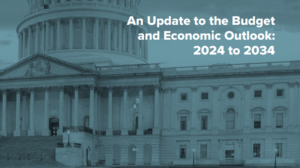As 2026 ushers in a fresh start, agricultural economists say the U.S. farm economy has stopped sliding, but it’s far from fully healed.The December Ag Economists’ Monthly Monitor shows month-to-month…
New CBO Estimate Remains Below GOP Farm Bill Needs
Agri-Pulse’s Philip Brasher reported Wednesday that “the Congressional Budget Office is sticking with a cost estimate for USDA’s Commodity Credit Corporation spending authority that is far lower than congressional Republicans need to fund their farm bill proposals. CBO on Tuesday estimated that USDA’s use of its Section 5 authority under the CCC would total $12 billion from fiscal 2025 through 2034. In February, USDA estimated that it would spend $15 billion over that period.”
“Neither figure is anywhere close to the $50 billion or more the House Agriculture Committee has been counting on to fund commodity program increases in the farm bill the panel passed in May,” Brasher reported.

Senate Ag Committee Chairwoman Debbie Stabenow (D-MI) said in a statement that “today’s updated projections from CBO prove what we have been saying all along: the House Republican Farm Bill is unpaid-for, relying on magic math and wishful thinking. In exchange for blocking USDA’s ability to provide real time assistance to farmers through the CCC to address emerging challenges, House Republicans received only a small fraction of the $50 billion hole they need to fill to pay for their bill.”
In response to the new CBO scoring, the Hagstrom Report reported that House Agriculture Committee Chairman Glenn “GT” Thompson said that “while we appreciate the difficult job of CBO, there are still clear discrepancies between their forecasts and historic realities. We will continue to work with the Budget Committee to ensure scores reflect the reality of how Section 5 authority has been used since 2018.
SNAP Costs Lowered
FERN’s Ag Insider reported that “the largest U.S. anti-hunger program, SNAP, will cost $59 billion less over the coming decade than thought in February because food prices are moderating, said the Congressional Budget Office.”
“CBO lowered the projected cost of SNAP by $7 billion this year and $59 billion from fiscal 2025-34, or about 5%. CBO said ‘recent data showed that actual average monthly benefits were lower than previously projected,'” Brasher reported.
Other Ag-Related Changes
Brasher reported that “CBO lowered slightly its cost estimates for some commodity program payments, but increased its projections for disaster assistance, according to an analysis provided to Agri-Pulse by Pat Westhoff, director of the University of Missouri’s Food and Agricultural Policy Institute. The 10-year estimate for disaster aid was raised by $8.9 billion from the February forecast, according to Westhoff’s calculations. USDA is now expected to provide just under $20 billion in disaster aid from fiscal 2025 through 2034.”
“CBO raised its 10-year estimate for payments to rice producers but made small reductions for other major commodities, including corn, soybeans, wheat and cotton,” Brasher reported.
Total Federal Deficit Projected to Increase
The Hill’s Aris Folley reported “the federal budget deficit is projected to reach $1.9 trillion this fiscal year, the Congressional Budget Office (CBO) said Tuesday, as government spending continues to rise.”
“The estimate of the gulf between annual revenue and spending is up about $400 billion from the office’s projections released in February. It was included in the nonpartisan budget scorekeeper’s latest update to its 2024-2034 budget and economic outlook,” Folley reported. “The office attributed the 27-percent jump largely to several key drivers, including foreign military aid, the Biden administration’s student loan actions, the Federal Deposit Insurance Corporation’s slower-than-expected recovery of payments made in response to bank failures over the past two years, higher outlays for Medicaid and increases in discretionary spending.”
“The cumulative deficit from 2025 to 2034 is projected to reach $22.1 trillion, which is 10 percent higher than the office previously projected in February, marking a $2.1 trillion increase,” Folley reported.





